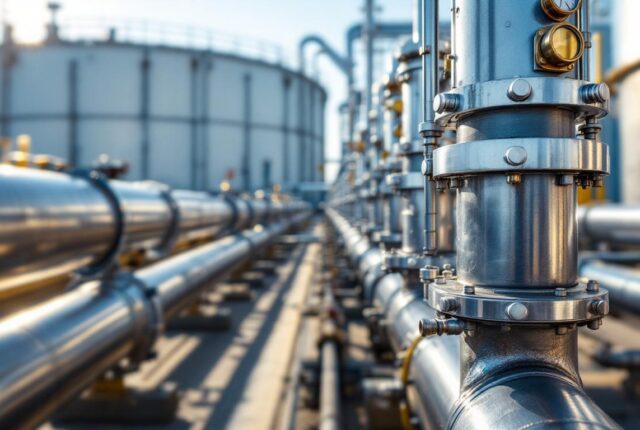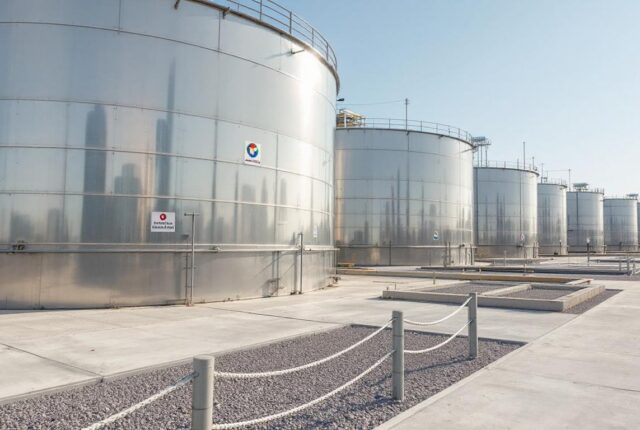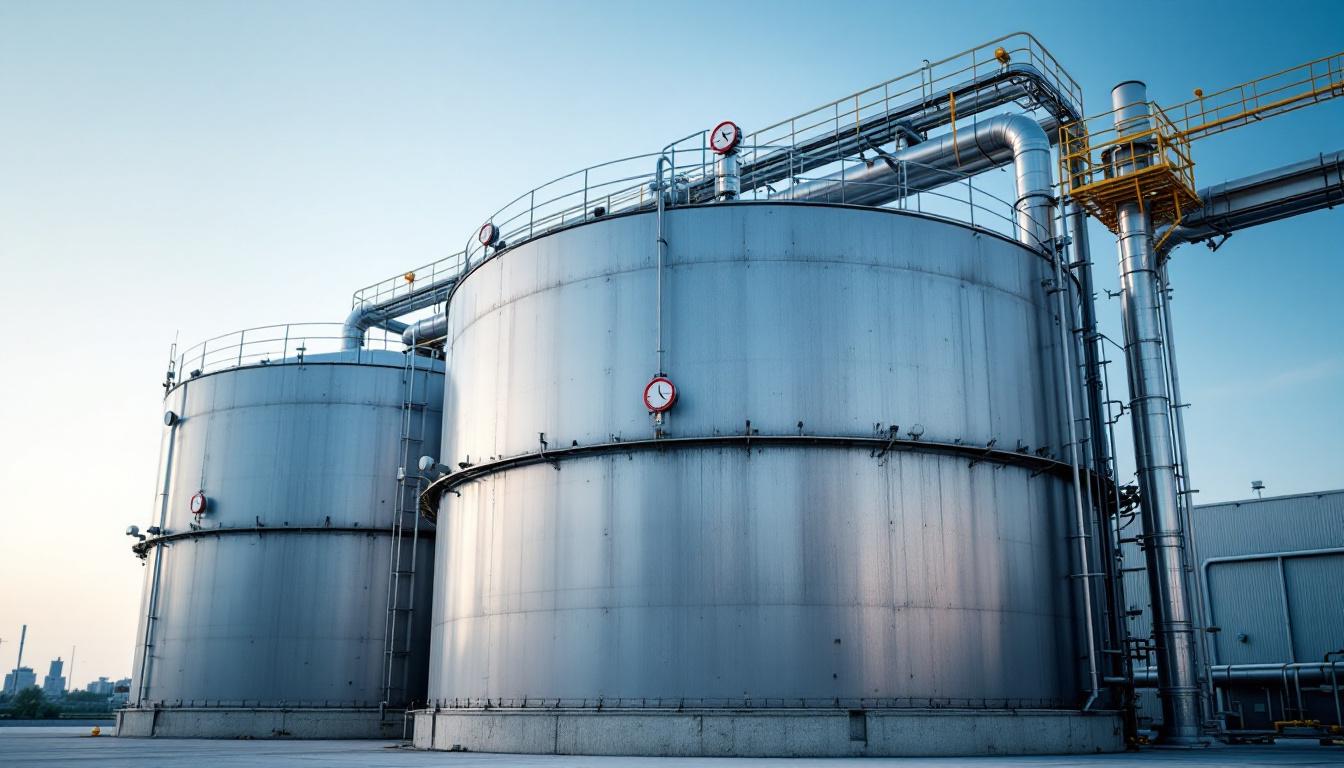
Jet Fuel Storage in Houston
Houston stands as a powerhouse in the global oil and gas industry, playing a pivotal role in jet fuel storage and distribution. At GLOBAL TERMINAL NETHERLANDS B.V, we recognize the strategic importance of this Texas hub for the aviation sector worldwide.
Jet fuel storage in Houston has evolved with cutting-edge technologies, enhancing safety, efficiency, and environmental sustainability. This blog post explores the advanced facilities, robust logistics networks, and future prospects that solidify Houston’s position as a key player in the jet fuel industry.
Why Houston Dominates Jet Fuel Storage
Houston’s Oil and Gas Powerhouse Status
Houston reigns supreme in the global oil and gas industry, extending its influence to jet fuel storage. The city’s Houston Ship Channel stands as the nation’s largest port for waterborne tonnage. A 2022 study by Martin Associates reveals the port’s massive economic impact: it supports 1.54 million jobs in Texas and 3.37 million jobs nationwide. This economic giant generates over $439 billion in economic value for Texas and $906 billion nationally.
Ideal Conditions for Jet Fuel Storage
Several factors contribute to Houston’s preeminence in jet fuel storage:
- Strategic Location: Houston’s proximity to major refineries and its central position in the Gulf Coast region provide easy access to jet fuel production and distribution channels.
- Advanced Infrastructure: The city boasts state-of-the-art storage facilities equipped with cutting-edge safety measures and environmental protections. Many storage tanks feature reinforced concrete containment walls (enhancing safety and preventing spills).
- Extensive Pipeline Network: Houston’s intricate pipeline system allows for efficient transportation of jet fuel to airports across the country. This reduces reliance on more expensive and less efficient modes of transport.
- Port Facilities: The Port of Houston ranks 1st in the U.S. for foreign waterborne tonnage (207 million short tons in 2023). It facilitates the import and export of jet fuel, enhancing global trade capabilities.
Impact on Aviation Sectors
Houston’s jet fuel storage capabilities profoundly affect both local and international aviation:
- Supply Stability: The large storage capacity ensures a stable supply of jet fuel. This mitigates the risk of shortages that could disrupt flight schedules.
- Competitive Pricing: The efficiency of Houston’s storage and distribution network helps keep jet fuel prices competitive. This benefits airlines and, ultimately, passengers.
- Economic Growth: The jet fuel industry in Houston contributes significantly to the local economy. The Port of Houston alone generates nearly $10.6 billion in state and local tax revenue.
- Global Reach: Houston’s jet fuel storage facilities serve not only domestic needs but also international markets. This solidifies the city’s position as a global energy hub.
Safety and Environmental Considerations
Houston’s jet fuel storage facilities prioritize safety and environmental protection. They implement rigorous safety protocols (including regular inspections and maintenance) to prevent accidents and spills. Environmental considerations include advanced containment systems and emissions control technologies to minimize the impact on surrounding ecosystems.
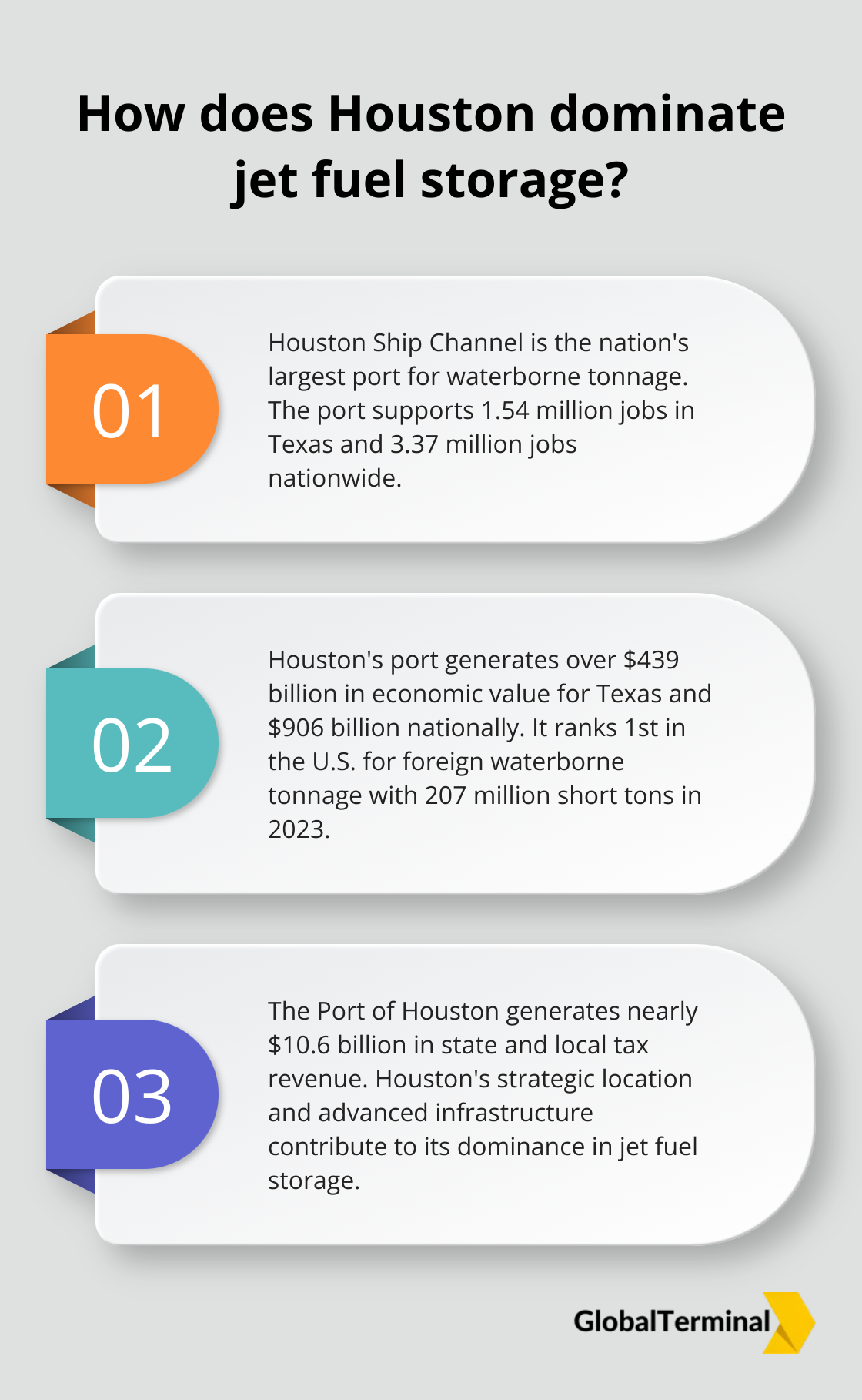
As we move forward to explore the advanced storage technologies employed in Houston, it becomes clear that these facilities represent the cutting edge of the industry. The next section will detail the state-of-the-art systems that make Houston a leader in jet fuel storage and distribution.
How Advanced Are Houston’s Jet Fuel Storage Facilities?
State-of-the-Art Storage Solutions
Houston’s jet fuel storage facilities showcase the pinnacle of technological advancement in the industry. These storage systems set the standard for safety, efficiency, and environmental responsibility. Many tanks feature double-wall construction with leak detection systems, providing an extra layer of protection against spills. Floating roof tanks, equipped with vapor recovery systems, significantly reduce emissions and prevent product loss.
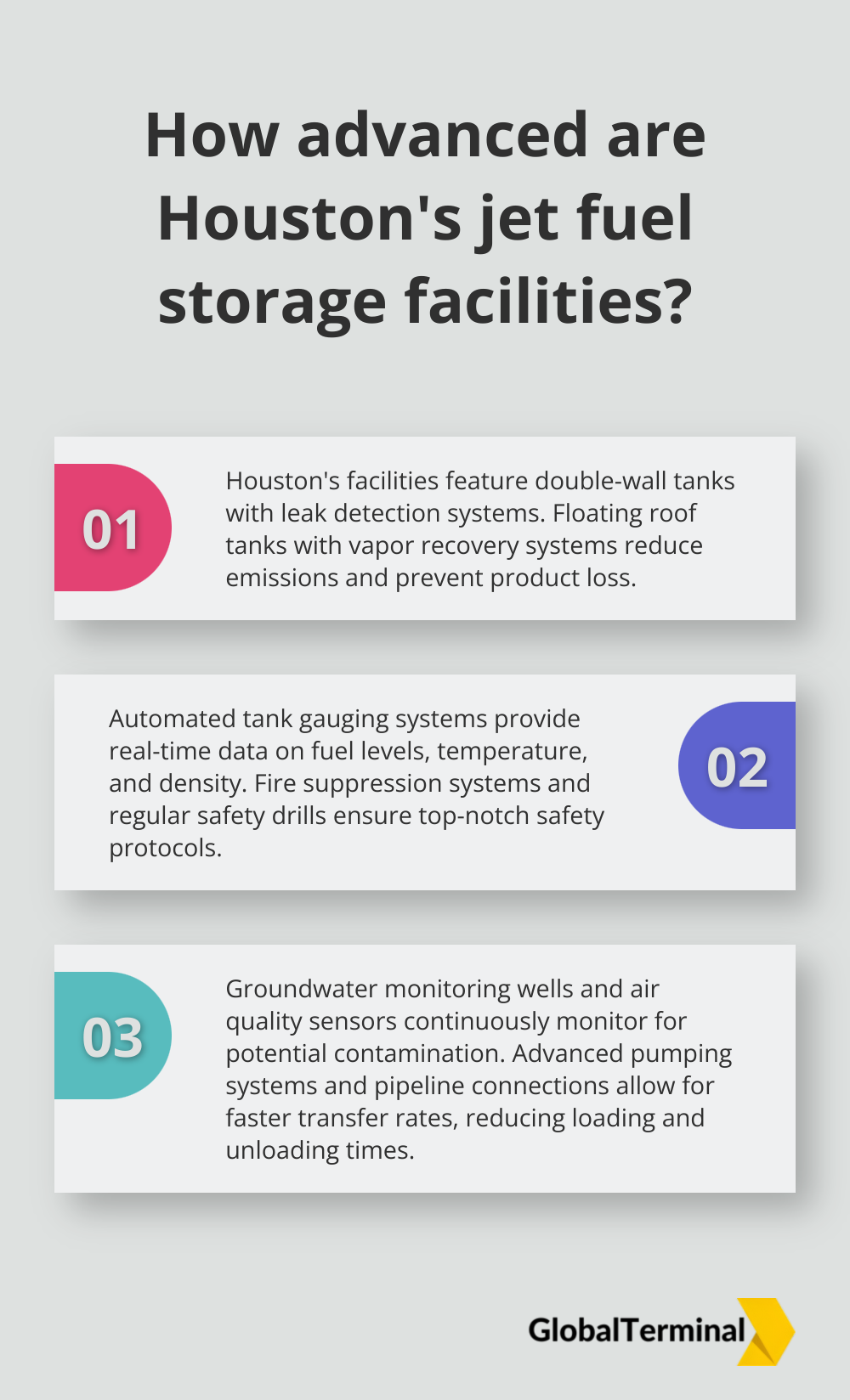
One of the most impressive innovations is the implementation of automated tank gauging systems. These high-precision instruments provide real-time data on fuel levels, temperature, and density. This allows for optimal inventory management and early detection of potential issues.
Rigorous Safety Protocols
Safety takes top priority in jet fuel storage, and Houston’s facilities spare no expense. Fire suppression systems (including foam generators and water deluge systems) are strategically placed throughout storage areas. Regular safety drills and training sessions ensure that personnel always remain prepared for emergencies.
Environmental monitoring plays an equally critical role. Groundwater monitoring wells surround storage areas, allowing for early detection of any potential contamination. Air quality sensors continuously monitor for vapor emissions, triggering alerts if levels exceed predetermined thresholds.
Capacity Expansion
Houston has seen expansions in jet fuel storage capacity in recent years. The Energy Information Administration provides statistics on various liquid fuels, including jet fuel, which can offer insights into storage capacity changes in the region.
Efficiency Improvements
Efficiency improvements in Houston’s jet fuel storage facilities have been equally impressive. Advanced pumping systems and pipeline connections allow for faster transfer rates, reducing loading and unloading times for tanker trucks and vessels. Some facilities have implemented heat recovery systems, capturing waste heat from operations to maintain optimal fuel temperatures, thus reducing energy consumption.
Digital Integration
The integration of digital technologies has revolutionized operations. Supervisory Control and Data Acquisition (SCADA) systems provide operators with comprehensive oversight of all storage and transfer operations. This level of control enhances safety, reduces human error, and optimizes resource allocation.
The industry’s commitment to sustainability stands out. Many Houston facilities now incorporate renewable energy sources, such as solar panels, to power auxiliary systems. Some have even implemented rainwater harvesting systems to reduce water consumption in their operations.
These advancements in Houston’s jet fuel storage facilities not only enhance operational efficiency but also contribute to the overall resilience of the aviation fuel supply chain. As we move forward, it becomes clear that the robust logistics and distribution network supporting these advanced facilities plays a critical role in Houston’s dominance in jet fuel storage and distribution.
Streamlining Jet Fuel Distribution in Houston
Port Integration: The Backbone of Distribution
The Port of Houston forms the cornerstone of jet fuel distribution in the area. Its strategic location and extensive facilities enable efficient handling of massive jet fuel volumes. In 2023, the Port of Houston saw total cargo volume marginally down 4% year-over-year, following a record-breaking 2022.
Multi-Modal Transportation: Flexibility and Efficiency
Houston’s jet fuel distribution relies on diverse transportation methods, each optimized for specific distances and volumes:
- Pipelines: These serve as the primary method for long-distance transport. The Colonial Pipeline transports more than 100 million gallons of product every day from 30 refineries to markets across the Southeast and Eastern Seaboard.
- Tanker Trucks: For shorter distances and smaller volumes, tanker trucks provide flexibility. These vehicles (typically carrying 8,000 to 9,000 gallons of jet fuel) play a vital role in last-mile delivery to airports.
- Barges: River and coastal transport via barges offers a cost-effective solution for moving large volumes of jet fuel. The Gulf Intracoastal Waterway facilitates the movement of millions of barrels of petroleum products annually.
- Rail: While less common, rail transport provides an additional option for jet fuel distribution, especially to inland destinations not easily reached by pipeline or barge.
Real-Time Monitoring: Advanced Supply Chain Management
Houston’s jet fuel distribution network employs state-of-the-art monitoring systems to ensure efficiency, safety, and transparency:
- SCADA Systems: Supervisory Control and Data Acquisition systems offer comprehensive oversight of the entire distribution network. These systems monitor pipeline pressures, flow rates, and valve positions, allowing for immediate response to any anomalies.
- GPS Tracking: Tanker trucks and barges come equipped with GPS tracking devices, providing real-time location data and estimated arrival times. This information optimizes delivery schedules and manages inventory levels at destination airports.
- Inventory Management Software: Advanced software solutions track jet fuel inventories across the distribution network, from storage tanks to airport fuel farms. This enables proactive replenishment and minimizes the risk of fuel shortages.
- Predictive Analytics: Through analysis of historical data and current trends, predictive analytics tools forecast future demand and potential supply chain disruptions. This allows for preemptive action to maintain a steady fuel supply.
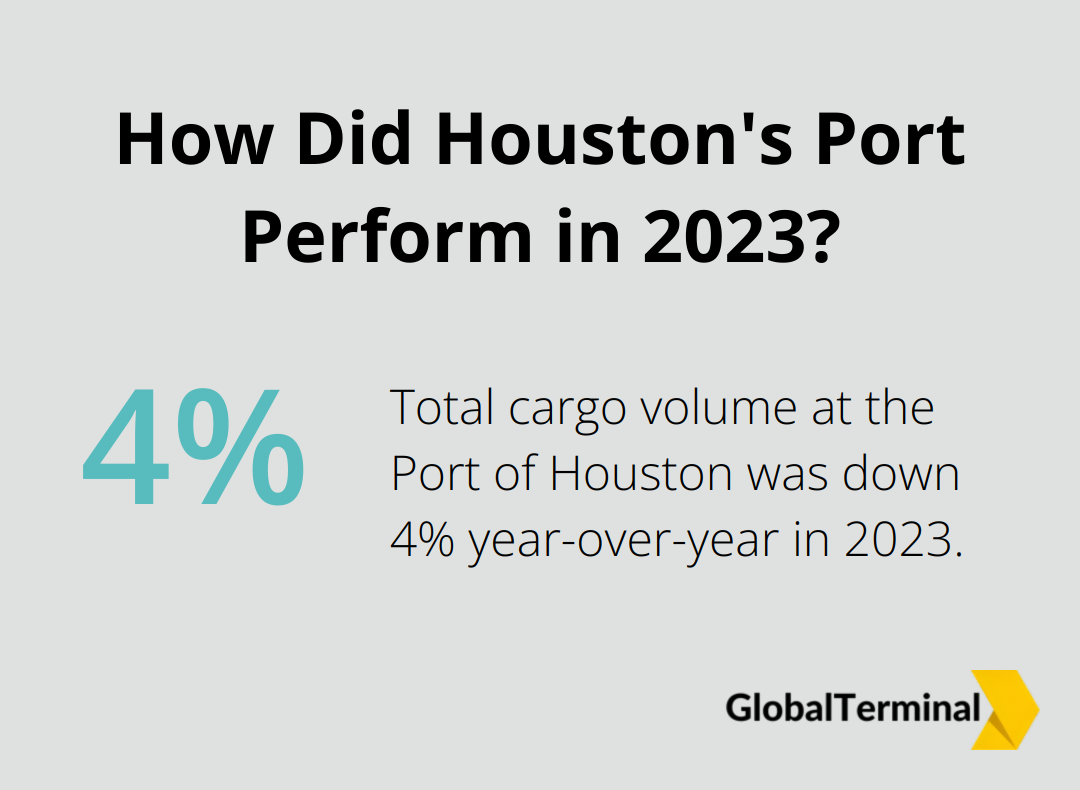
The integration of these technologies creates a resilient and responsive jet fuel distribution network. Companies like Global Terminal Netherlands B.V. utilize these advanced systems to offer their clients unparalleled visibility and control over fuel supply chains.
Final Thoughts
Houston’s role in jet fuel storage and distribution highlights its importance in the global aviation industry. The city’s location, infrastructure, and logistics network cement its position as a key player in jet fuel supply. The future of jet fuel storage in Houston promises growth and innovation, with increased investments in smart storage solutions and environmentally friendly practices.
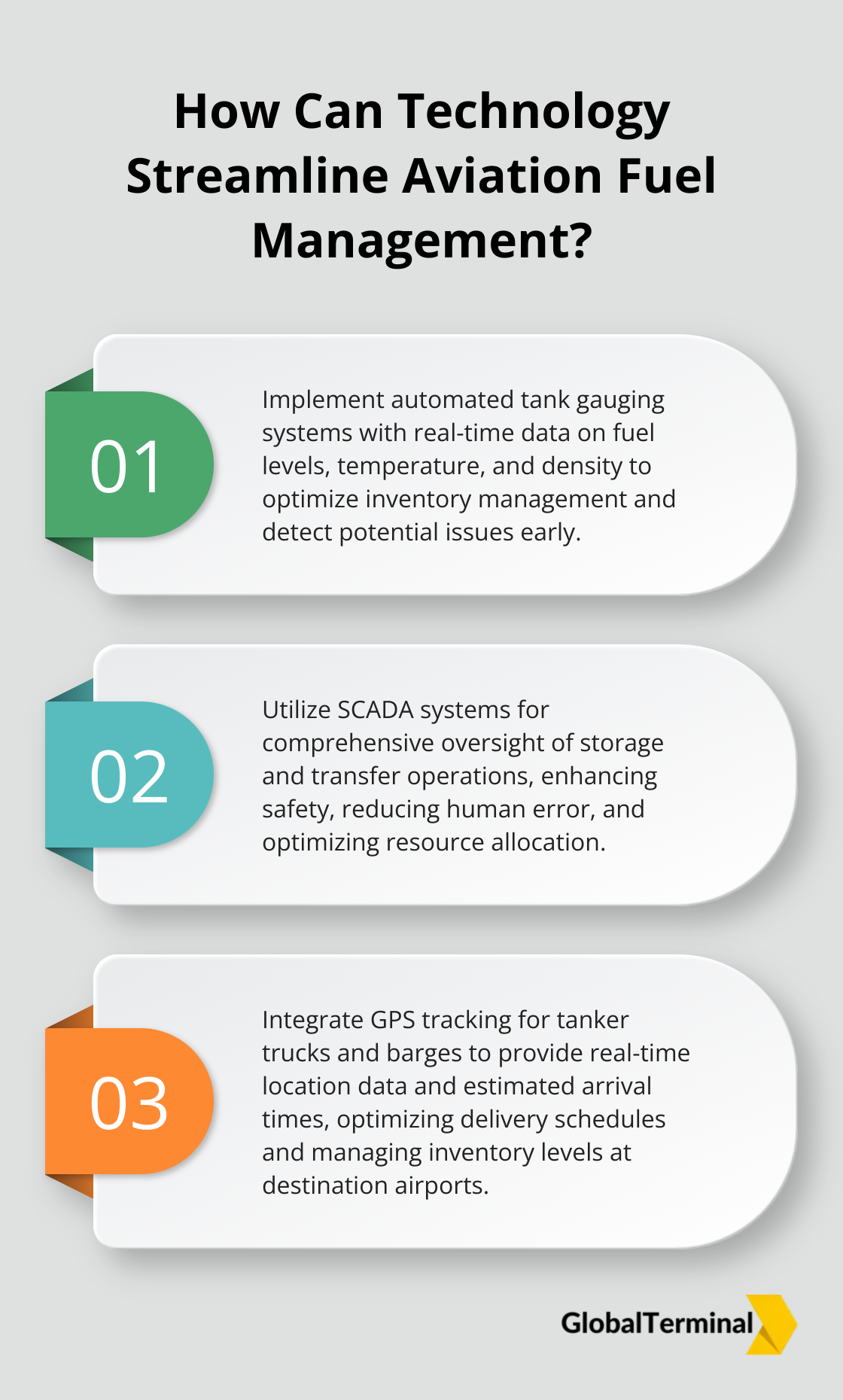
Sustainability will shape the future of jet fuel storage in Houston. Storage facilities must adapt to accommodate sustainable aviation fuels and other low-carbon options. This transition presents opportunities for storage providers to innovate and lead in environmental stewardship.
At GLOBAL TERMINAL NETHERLANDS B.V, we recognize the importance of staying ahead of industry trends. Our commitment to premier fuel storage and logistics solutions aligns with Houston’s role as a global energy hub. We contribute to the efficiency and reliability of jet fuel storage in Houston (and beyond) through state-of-the-art facilities and real-time monitoring.

